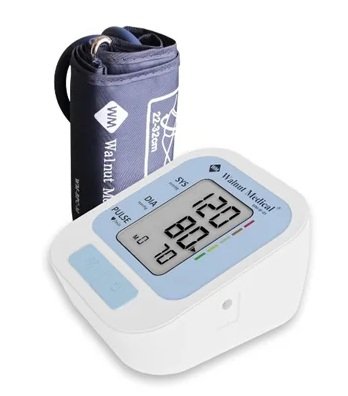Understanding Blood Pressure Machines: A Vital Tool for Health Monitoring
Blood pressure is a crucial indicator of cardiovascular health, and monitoring it regularly is essential for maintaining overall well-being. Blood pressure machines, also known as sphygmomanometers, play a pivotal role in tracking and managing blood pressure levels. In this article, we will delve into the significance of these machines, their types, and the importance of accurate blood pressure measurements.
Types of Blood Pressure Machines:

1. Manual Blood Pressure Monitors:
Traditional and commonly found in medical settings, manual monitors involve a cuff, a pressure bulb, and a stethoscope. Healthcare professionals inflate the cuff manually, listen to the heartbeat with the stethoscope, and determine the blood pressure readings.
2. Automatic Blood Pressure Monitors:
Widely used for home monitoring, automatic monitors are user-friendly. They inflate the cuff automatically and provide digital readings. Some models even offer additional features such as irregular heartbeat detection and memory storage for multiple readings.
3. Wrist Blood Pressure Monitors :
Compact and portable, wrist monitors are worn like a watch. While convenient, they may not always provide as accurate readings as arm monitors due to potential positioning issues.
Importance of Regular Blood Pressure Monitoring:
1. Early Detection of Hypertension:
Regular blood pressure monitoring helps detect hypertension early. Timely intervention can prevent complications such as heart disease, stroke, and kidney problems.
2. Management of Chronic Conditions:
Individuals with chronic conditions like diabetes or cardiovascular diseases benefit from consistent blood pressure monitoring. It allows for better management and adjustments to treatment plans as needed.
3. Preventive Health Measures:
Monitoring blood pressure at home empowers individuals to take control of their health. It encourages a proactive approach to lifestyle modifications, including dietary changes, exercise, and stress management.
Accuracy in Blood Pressure Measurements:

1. Proper Technique:
Whether using a manual or automatic monitor, correct technique is crucial for accurate readings. Ensuring the cuff is the right size, positioning it at heart level, and following recommended guidelines enhances the reliability of measurements.
2.Regular Calibration:
Blood pressure machines should be calibrated regularly to maintain accuracy. Professional calibration or following the manufacturer’s guidelines for self-calibration ensures consistent and reliable readings.
3. Comparison with Professional Readings:
Periodically comparing home readings with those obtained in a clinical setting helps validate the accuracy of the blood pressure machine. Any significant discrepancies should be addressed promptly.
Conclusion:
Blood pressure machines are invaluable tools for health monitoring, providing a convenient and efficient means of tracking one’s cardiovascular health. Whether used in a medical setting or at home, these devices offer insights that can aid in early detection, effective management of chronic conditions, and the adoption of preventive health measures. It is essential to prioritize accuracy through proper usage, regular calibration, and occasional validation against professional readings. By incorporating blood pressure monitoring into our routine, we proactively maintain optimal health and prevent potential complications.




![Snapchat Spectacles (5th Gen) [Top Features Unveiled] [2024] Snapchat Spectacles](https://barefootclimb.com/wp-content/uploads/2024/10/Snapchat-Spectacles-150x150.jpg)






